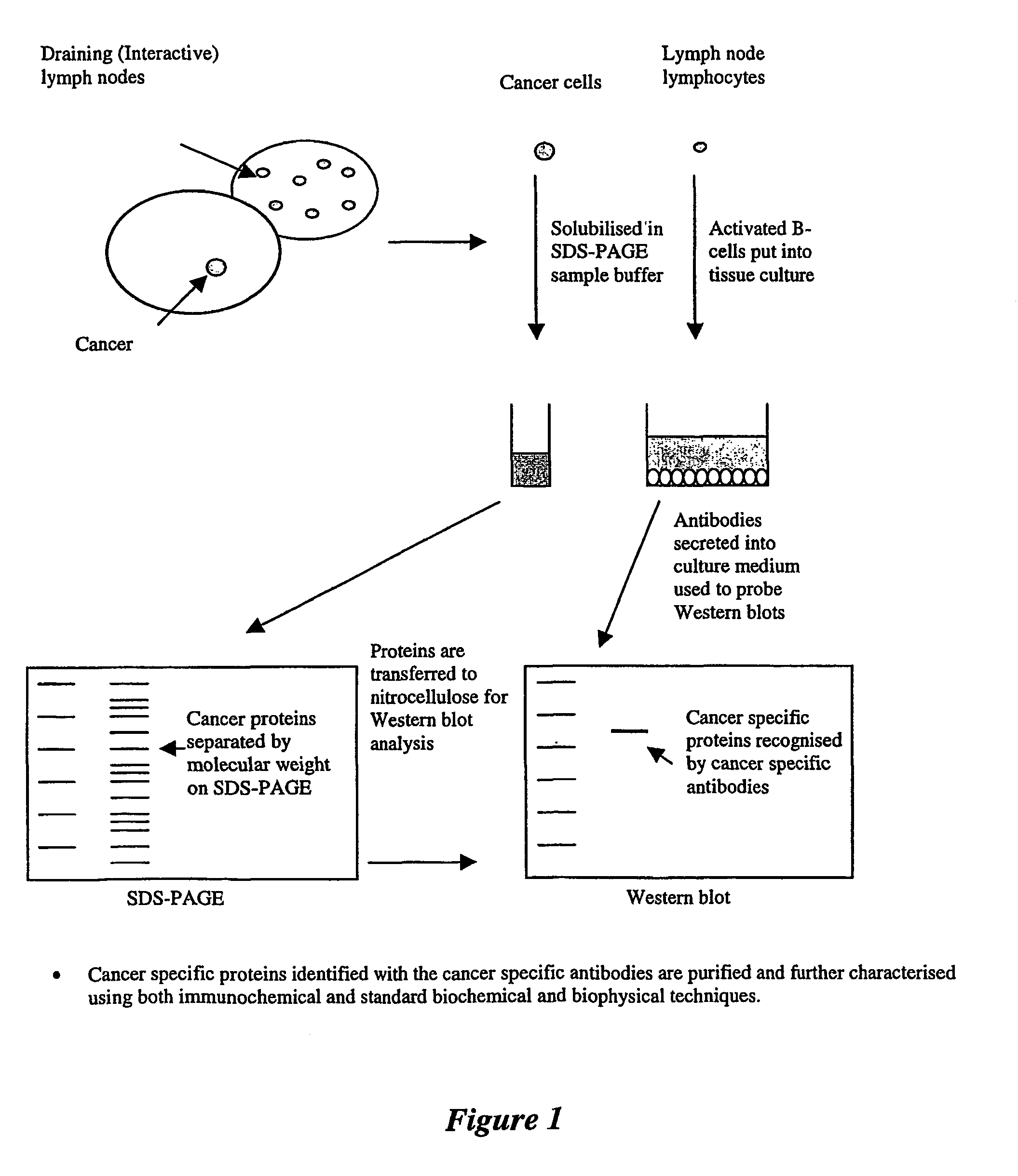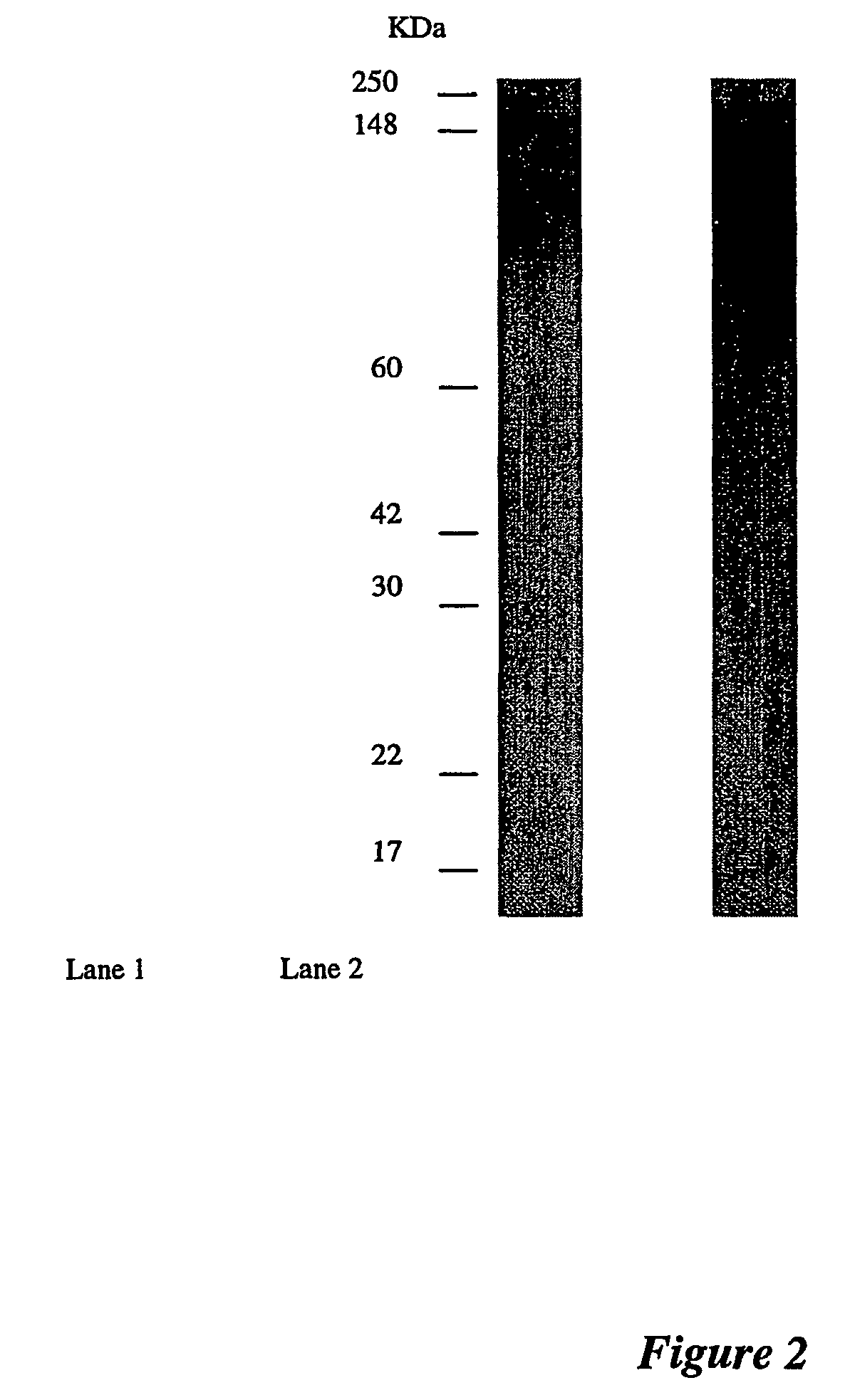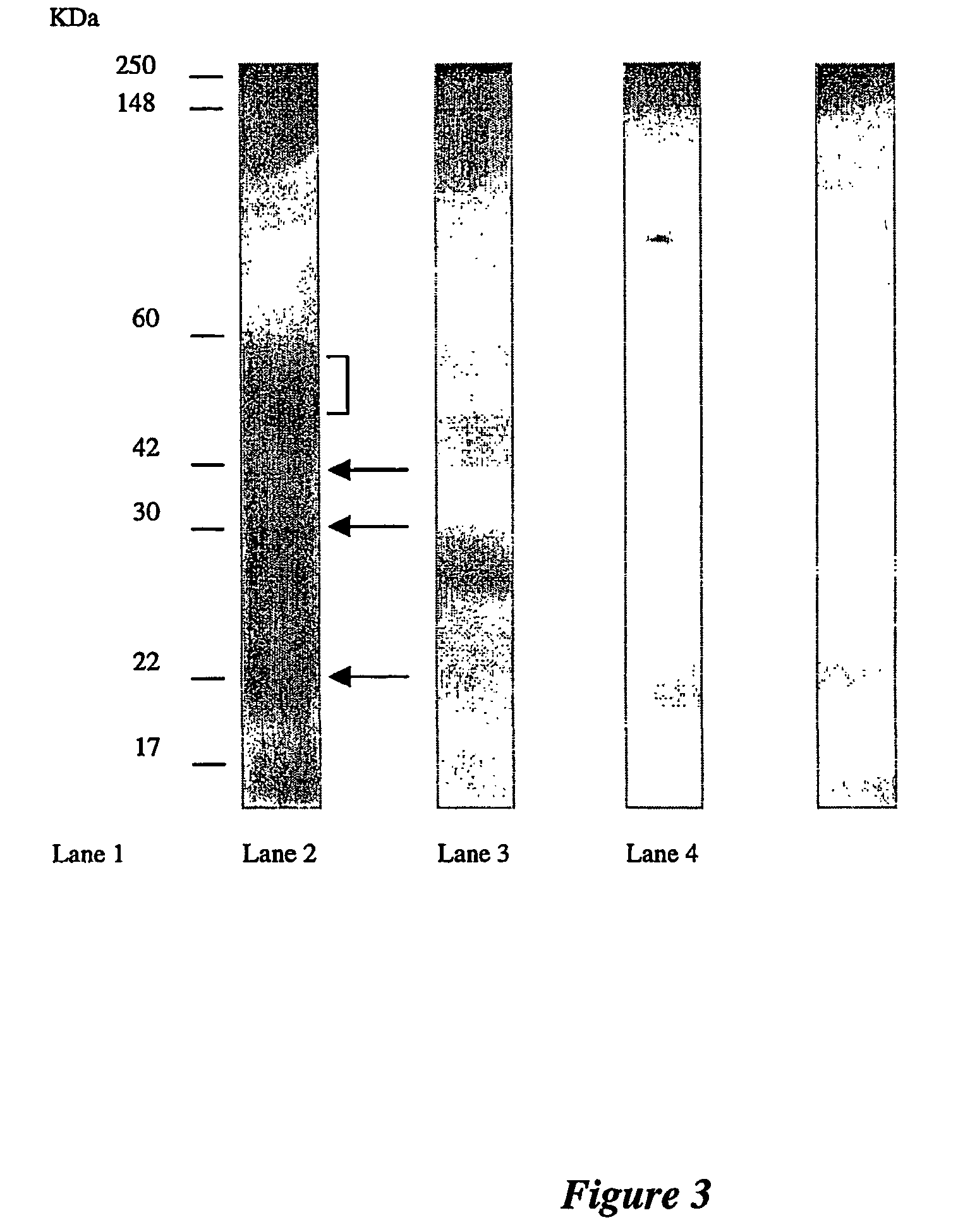Probes for identifying cancer-specific antigens
a technology of antigens and probes, applied in the field of probes for identifying cancer-specific antigens, can solve the problems of reducing the ten-year survival rate, affecting the generation of suitable and effective therapies, and remained the major stumbling block to the identification of cancer-specific molecules,
- Summary
- Abstract
- Description
- Claims
- Application Information
AI Technical Summary
Benefits of technology
Problems solved by technology
Method used
Image
Examples
example 1
Preparation of ASC-Culture Supernatants
[0104]Lymph nodes draining the breast were collected after surgery and were teased gently in Dulbecco-modified Eagle's medium (DME) containing 10% heat-inactivated fetal calf serum (FCS) and antibiotics (400U / ml penicillin and 0.1 mg / ml streptomycin). Cells were collected, washed three times and resuspended to a final concentration of 5×106 cells / ml in complete culture medium (DME supplemented with 400U / ml penicillin, 0.1 mg / ml streptomycin, 10% FCS, 2 mM glutamine). Pokeweed mitogen (Sigma Aldrich) was added at a concentration of 2.5 μg / ml to increase antibody secretion. Culture flasks containing 10 ml cell suspensions or 24-well culture plates containing 2 ml cell suspension per well were incubated at 37° C. in an atmosphere of 5% CO2 in air, and cell supernatants harvested 5-6 days later. Culture supernatants containing antibodies secreted by antibody-secreting cells (ASC) present in the lymph node cell suspensions were subsequently stored a...
example 2
Purification and Labelling of Antibodies from Cell Supernatants
[0105]Antibodies secreted by the ASC in culture supernatant were purified by affinity chromatography using a Protein-G column (Pharmacia HiTrap Affinity Column, 1 ml). The column was pre-equilibrated with loading buffer (20 mM sodium phosphate, pH 7.0). The cell supernatants were applied to the Protein G column, and the unbound proteins removed using 10 column volumes of loading buffer. Bound proteins were eluted from the column using 3 column volumes of elution buffer (0.1 M glycine / hydrochloric acid, pH 2.7). The eluate was neutralised using 100 μl 5 M tris / hydrochloric acid, pH 8.0. The purified antibody solution was dialysed extensively against phosphate buffered saline (PBS) before being stored at 4° C.
[0106]Control antibodies were purified from the serum of a patient who was found not to have breast cancer. The method of purification was identical to that used for the ASC supernatants.
Biotinylation of Purified Anti...
example 3
Western Blotting
[0108]Appropriate dilutions of the antigens were loaded on a 10% SDS-PAGE gel and blotted on to nitrocellulose membrane (MSI, Melbourne, Australia). Western blot transfers were performed using the wet transfer apparatus (Bio-Rad Laboratories) at a constant voltage of 100V for 1 hour in transfer buffer (25 mM Tris-HCl pH 8.3, 192 mM glycine and 15% (v / v) methanol). After electrophoretic transfer, the membranes were placed in a blocking solution of 3% skim milk powder in PBS for 1 hour, then washed 3 times with 0.05% Tween 20 in PBS before being probed with antibody. For urine samples, Western blots were probed for 2 hours with undiluted ASC supernatant, followed by incubation for 1 hour with peroxidase-conjugated rabbit anti-human IgG serum (DAKO) at a 1:2000 dilution.
[0109]Western blots of breast tissue gave high reactions with the conjugate, due to contamination of the tissue with serum immunoglobulins. A one-step 2 hour incubation with purified biotinylated antibod...
PUM
 Login to View More
Login to View More Abstract
Description
Claims
Application Information
 Login to View More
Login to View More - R&D
- Intellectual Property
- Life Sciences
- Materials
- Tech Scout
- Unparalleled Data Quality
- Higher Quality Content
- 60% Fewer Hallucinations
Browse by: Latest US Patents, China's latest patents, Technical Efficacy Thesaurus, Application Domain, Technology Topic, Popular Technical Reports.
© 2025 PatSnap. All rights reserved.Legal|Privacy policy|Modern Slavery Act Transparency Statement|Sitemap|About US| Contact US: help@patsnap.com



